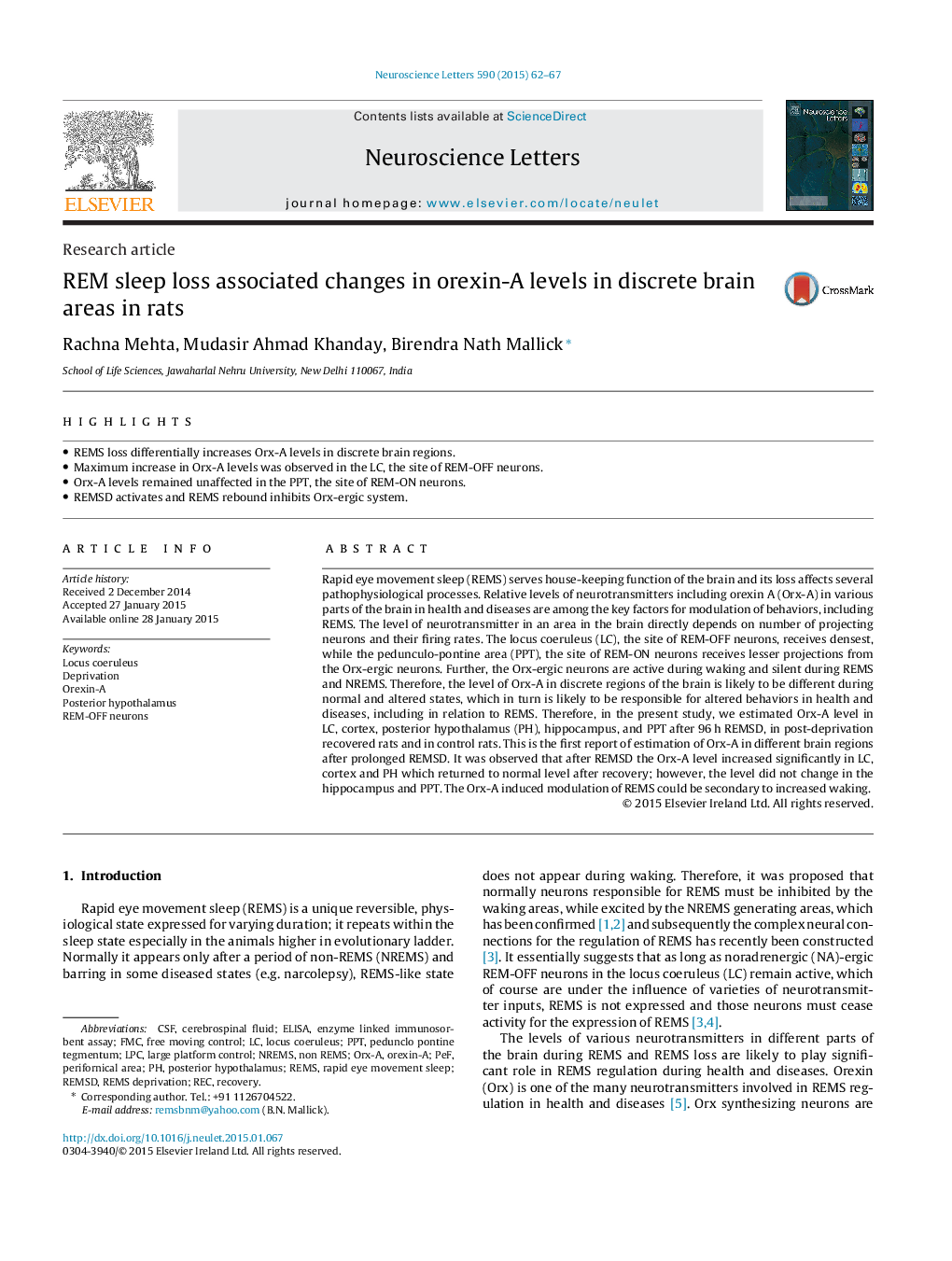| Article ID | Journal | Published Year | Pages | File Type |
|---|---|---|---|---|
| 6280764 | Neuroscience Letters | 2015 | 6 Pages |
Abstract
Rapid eye movement sleep (REMS) serves house-keeping function of the brain and its loss affects several pathophysiological processes. Relative levels of neurotransmitters including orexin A (Orx-A) in various parts of the brain in health and diseases are among the key factors for modulation of behaviors, including REMS. The level of neurotransmitter in an area in the brain directly depends on number of projecting neurons and their firing rates. The locus coeruleus (LC), the site of REM-OFF neurons, receives densest, while the pedunculo-pontine area (PPT), the site of REM-ON neurons receives lesser projections from the Orx-ergic neurons. Further, the Orx-ergic neurons are active during waking and silent during REMS and NREMS. Therefore, the level of Orx-A in discrete regions of the brain is likely to be different during normal and altered states, which in turn is likely to be responsible for altered behaviors in health and diseases, including in relation to REMS. Therefore, in the present study, we estimated Orx-A level in LC, cortex, posterior hypothalamus (PH), hippocampus, and PPT after 96Â h REMSD, in post-deprivation recovered rats and in control rats. This is the first report of estimation of Orx-A in different brain regions after prolonged REMSD. It was observed that after REMSD the Orx-A level increased significantly in LC, cortex and PH which returned to normal level after recovery; however, the level did not change in the hippocampus and PPT. The Orx-A induced modulation of REMS could be secondary to increased waking.
Keywords
Related Topics
Life Sciences
Neuroscience
Neuroscience (General)
Authors
Rachna Mehta, Mudasir Ahmad Khanday, Birendra Nath Mallick,
